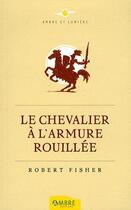-
Nombre de pages : (-)
-
Collection :
(-)
-
Genre :
(-)
-
Thème :
Non attribué
-
Prix littéraire(s) :
(-)
Résumé:
There is an ongoing debate among photographers whether digital photography processes will ever be able to reach the pinnacle of image quality and tonality achieved by Ansel Adams decades ago. The Digital Zone System (DZS) is an innovative methodology for editing digital images that mimics the... Voir plus
There is an ongoing debate among photographers whether digital photography processes will ever be able to reach the pinnacle of image quality and tonality achieved by Ansel Adams decades ago. The Digital Zone System (DZS) is an innovative methodology for editing digital images that mimics the Zone System created by Adams.
With this book, author Robert Fisher presents a practical guide for editing digital images with a level of control previously unattainable without significant manual work. He walks the reader through the background of Adam's original Zone System and points out similarities to current digital processes including Expose to the Right (ETTR) and high dynamic range imaging (HDRI).
Learn to use luminance masks to separate an image into "one-stop" zones of brightness, similar to the zones in Adams's Zone System, that can be worked on individually or in groups. This makes the DZS a powerful tool for converting color images to black and white. You will also gain tremendous control over how color is adjusted in your images by learning to isolate and adjust color in specific targeted areas. These DZS processes are quicker and simpler than the tedious work of using global adjustments and painting in layer masks to isolate the effects of an adjustment layer.
In this book, you will learn how to use the Digital Zone System for editing color images, converting images to black and white, and tone mapping HDR images. Also included are brief discussions of color management, setting up Photoshop, printing, and exposure for digital images.
The book is richly illustrated with step-by-step screenshots and stunning example images that show the benefits of the Digital Zone System over commonly used digital editing methods. Once mastered, the DZS will allow you to produce a higher level of quality in your images, at a faster pace and with greater ease than ever before.
Donner votre avis









